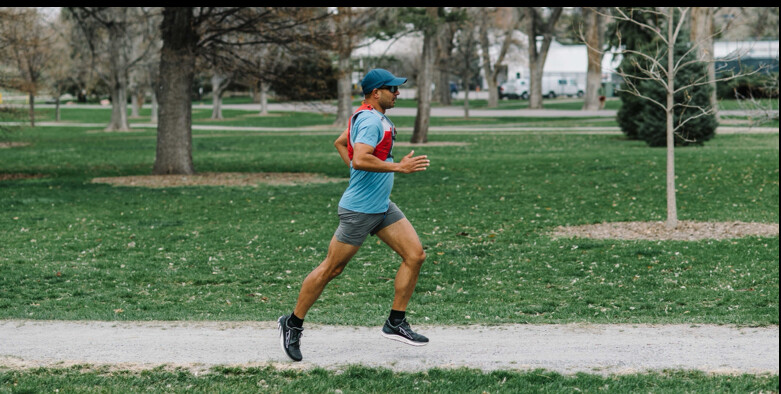Running News Daily
Running News Daily is edited by Bob Anderson. Send your news items to bob@mybestruns.com Advertising opportunities available. Train the Kenyan Way at KATA Kenya and Portugal owned and operated by Bob Anderson. Be sure to catch our movie A Long Run the movie KATA Running Camps and KATA Potato Farms - 31 now open in Kenya! https://kata.ke/
Index to Daily Posts · Sign Up For Updates · Run The World Feed
How to Reverse Taper to Build Your Mileage Back Up After a Race
Two run coaches offer details for between-race training.While training for a half marathon or marathon is anything but easy, following a well-designed program is pretty straightforward. You ramp up your mileage when the program says so, mix in speed work and intervals as instructed, and taper volume and intensity (sometimes begrudgingly) when the schedule dictates.
But, what happens after you check off that final “Race Day!” box on your calendar and float into the no man’s land between training programs? You’re tired and need to rest, but the idea of unstructured time off makes you antsy. Plus, your next race isn’t that far off. Following a “reverse taper” or “tapering up” allows you to bridge the space between events. The idea of the reverse taper is to gradually reintroduce running and increase volume while still prioritizing rest and recovery.

To better understand the logic behind tapering up, down, and in reverse, we spoke with Jessie Zapotechne, a coach with Adidas Runners in New York City and the founder of Girls Run NYC, and Raj Hathiramani, certified running coach at Mile High Run Club in New York City. Both are seasoned marathoners who have designed training programs and coached countless athletes through the ebbs and flows of race prep and recovery. Here’s what to know.
Understanding the Reverse Taper
The reverse taper is different from simply increasing volume to prepare for a race. When you’re in the midst of training and following a training plan, “weekly mileage increases are a gentle, rolling progression,” Hathiramani says. This approach compounds strength and endurance as the body adapts to new and increased training demands in order to reach a specific distance and pace.
Postrace, however, you’re working with a different baseline. “Racing wears down muscles, depletes glycogen, and suppresses your immune system,” Hathiramani says. Recovery—both physical and mental—should be your number-one priority.
“For longer races, this can include several days or a week of full rest before cross-training and resuming running, and for shorter or lower-effort races, you can focus on active recovery and cross-training with a quicker return to running,” Hathiramani says.
If you’re worried about losing all of the progress you made during training, don’t be. “Our fitness does not diminish as drastically as we think with an extended period of rest. Our bodies adapt to ‘defend’ our fitness level,” Hathiramani adds.
When you feel rested and ready to jump back in, you can start with some short, unstructured runs to see how you feel. (Don’t be afraid to shorten or bail on a workout if you’re feeling fatigued.)
Unlike a regular taper within training plans, there are fewer agreed upon rules about how to train without a specific goal or race plan. While you can use your previous training for guidance, Hathiramani emphasizes that this can be “tricky,” as the right approach depends upon your experience, training history, and distance of your last race.
“Generally, it’s fair to say after a rest period following a race, you can build back from the end of your base building phase,” he says. You don’t need to start at week one, but you also shouldn’t dive back into peak training.
Consider picking a week from the early-to-middle of the training plan as your reverse taper starting point. “It’s usually six to eight weeks into a [marathon] training cycle,” Hathiramani says.
6 Reverse Taper Tips
To taper up like a pro, and to avoid injuries and overtraining, consider the following tips and mistakes to avoid. 1. Progress Slow(er than Usual)
A weekly mileage increase of 10 to 20 percent is standard for most training plans, but remember that when you start a reverse taper, you’re not simply building mileage, you’re recovering. It’s okay to keep your volume the same from one week to the next or even reduce it, if needed.
2. Honor Rest Days
“A common mistake that I’ve seen athletes make is to skip a rest day because they are feeling good,” Zapotechne says. “This results in overtraining or feeling fatigued when it is time for them to continue on with the next planned workouts.”
If you crave movement on a rest day, consider an activity like restorative yoga or walking.
3. Don’t Dismiss Sharp or Persistent Pain
“Increased mileage will mean you are using more energy and thus need appropriate recovery, nutrition, and sleep. It is normal to feel more sore, tired, and hungry,” Hathiramani says. But anything more intense could signal injury. “A red flag is any sharp pain or persisting ache that gets worse when you run or is above a 4 out of 10 on a pain scale.” If you experience this kind of discomfort, see a doctor.
4. Keep Easy Runs Easy
“Easy runs coupled with intentional recovery sessions (e.g., stretching, mobility, preventative physical therapy, and sports massage) help achieve weekly mileage while letting your body regain strength after harder efforts,” Hathiramani says.
Use the talk test to keep your exertion easy and, if necessary, ignore your watch.
5. Don’t Overdo It With Interval Training
When you’re not yet on a training plan and are starting your reverse taper, Hathiramani suggests refraining from specialty runs, such as speed work. “For most runners, one interval training session a week is most effective to balance improving endurance with staying injury-free,” he says.
Save intervals, fartlek, and other speed runs for when you’re back on an official training plan.
6. Recover as Hard as You Train
“More mileage means more recovery and more sleep,” Hathiramani says. “Rest is important to maintain good mental health and optimal performance.” So, if you’re waking up before dawn to get in your morning run before the day starts, make sure you’re hitting the sack early, too.
A Refresher on the Traditional Taper
Reverse tapers and traditional tapers have equal importance. “Tapering,” or reducing your running volume and intensity in the days and weeks leading up to a race, is a very intentional race-prep strategy. Because whether or not you feel it (and you probably do feel it), your body has taken a hit, thanks to all those long runs, interval workouts, and tempo runs. “Tapering allows your body’s energy, strength, and health to return to optimal levels,” Hathiramani says.
Every taper looks a little different based on the type of race, the length and design of the training program, and how an athlete responds to training. “Most marathon plans call for a three-week taper and a 20 to 30 percent reduction in mileage each of those weeks, with little or no training faster than your race goal pace,” Hathiramani says.
A half marathon program may include just two weeks of tapering, and, if you’re training for a 10K, you might start cutting back a week to 10 days before race day.
During a training plan, after so many weeks of steadily accumulating more miles and tougher workouts, it can be surprisingly challenging to pump the breaks. “I feel I’m a better person in life when I’ve been able to go out and get my endorphins from running,” Zapotechne says. “Then taper time comes, and I have fewer runs, and they are shorter. This can often build up a lot of anxiety, and I’ve got energy now that does not have a place to be released.”
Here are a few tips to help round out your knowledge about the reverse and traditional taper:
1. Don’t Swap Running for Other Workouts
“In the past, I’ve made the mistake of deciding that, since I’m not running, I’ll go do that boxing class or other random workout that I’ve been meaning to do, and the result is then that I’m sore and I’ve overworked muscles that I was supposed to be resting,” Zapotechne says.
A taper isn’t the time to build muscle or experiment with different forms of exercise. If you feel like you have to do something, channel your energy toward active recovery practices, like mobility work, stretching, and meditation.
2. Don’t Try New Shoes (or Gear, Nutrition, or Routes)
The “nothing new on race day” adage should probably be amended to read, “Nothing new in the weeks leading up to race day.” By the time you get to a taper, you’ll likely have a formula that works for you—stick with it. Any adverse reactions to changes in your gear or habits (blisters and GI distress, anyone?) will rob you of quality recovery time.
3. Don’t Play “Catch-Up”
It’s normal for runners to miss an occasional workout on a training plan or feel like they didn’t work hard enough to prepare for a race. The taper period is not the time to play catch-up. “I coach athletes (and remind myself) that you cannot increase your fitness by doing more intense workouts the week before a race,” Zapotechne says. “You have to trust that what you have done is enough and that, ultimately, rest is your friend.”
by Runner’s World
Login to leave a comment




